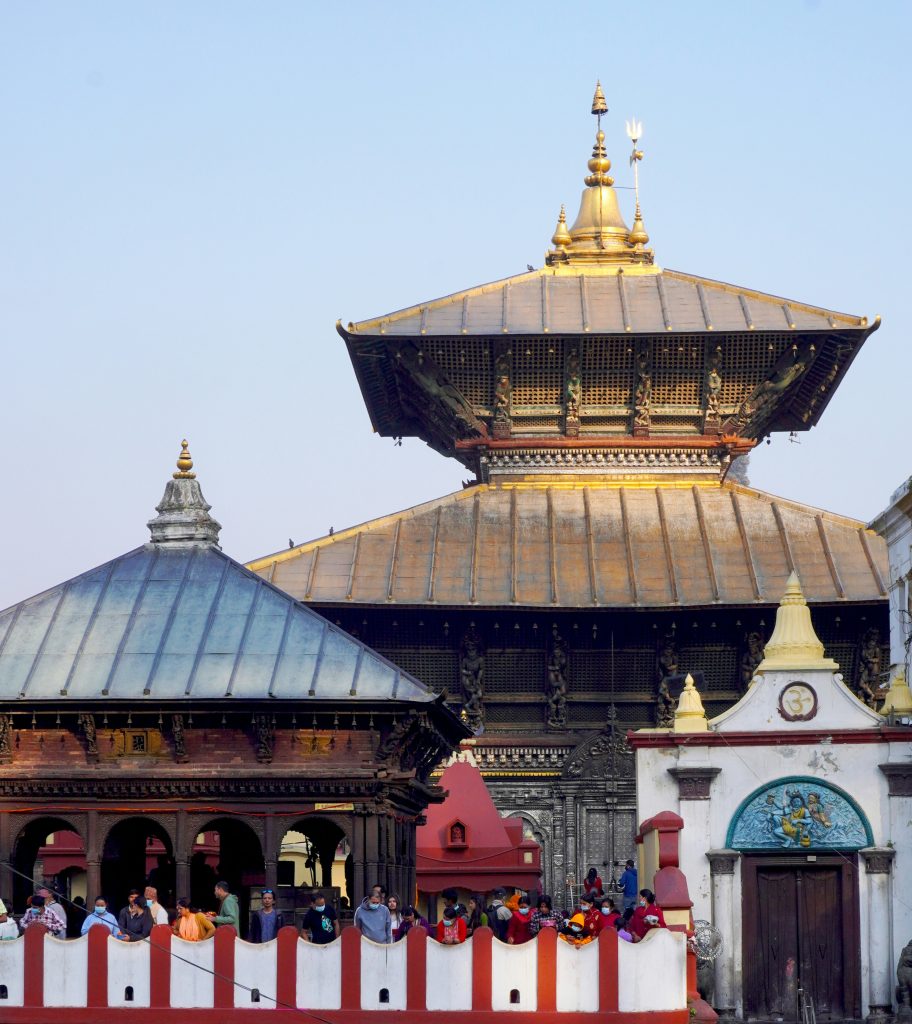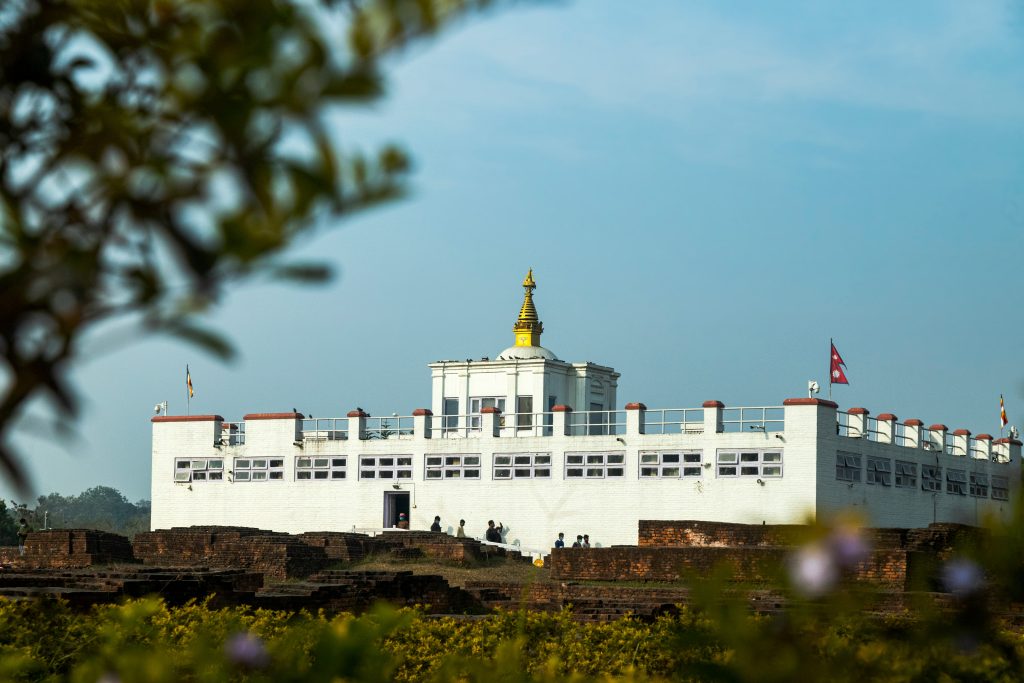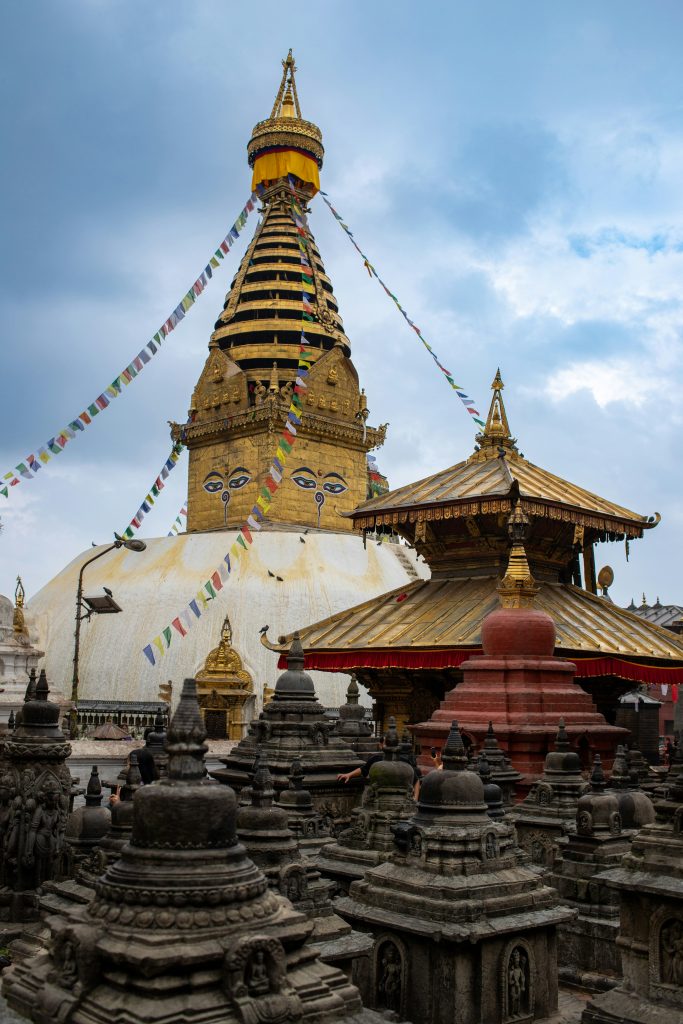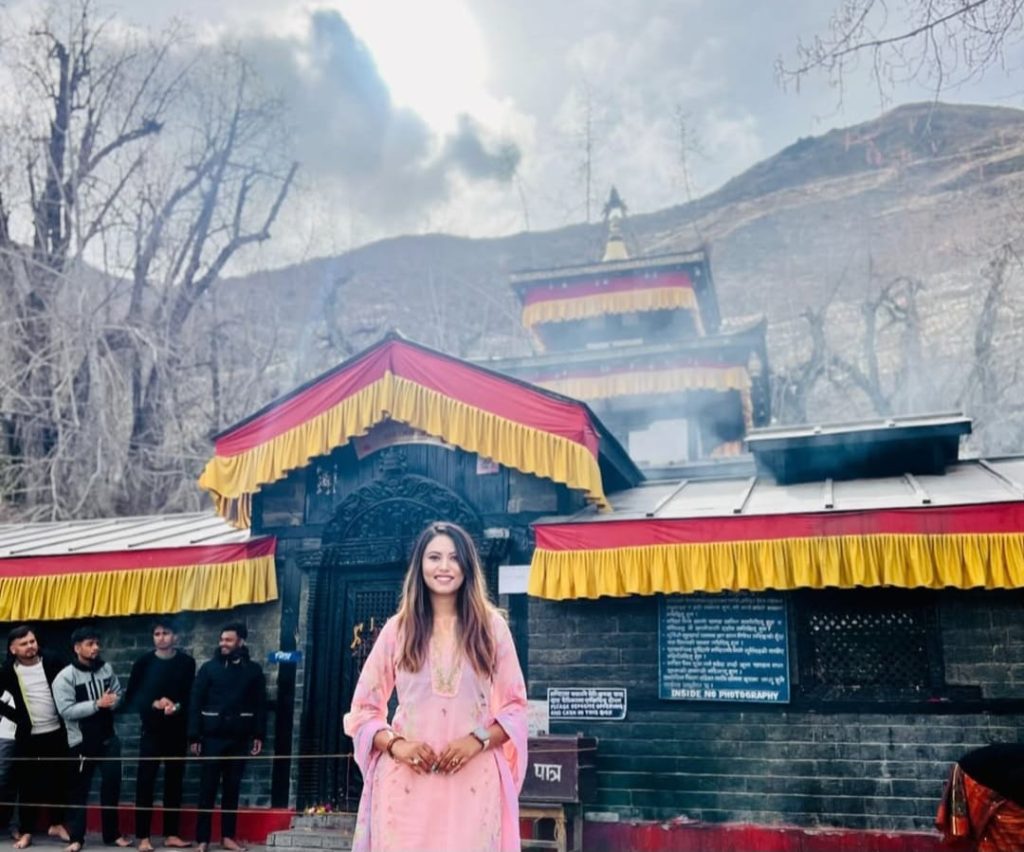Top 10 Religious Places in Nepal

Nepal is well-known not only for its breathtaking trekking locations but also for being the location of ancient religious places, monuments and traditions dating back thousands of years. Likewise, it is believed that 33 million gods and goddesses reside in Nepal, and various temples and locations honoring these deities may be found throughout the country.
Nepal is influenced culturally by China and India, two of its neighbors. Although Nepal was proclaimed a secular country on January 15, 2007, the majority of its people—81.3%—remain Hindu. Additionally, Nepal’s religious equality is demonstrated by the large number of temples, churches, mosques, and monasteries.
Furthermore, Nepal has a rich history with important individuals from Buddhist and Hindu mythology. Some gods are said to have originated or visited Nepal. Alternatively, Nepal is the birthplace of Gautam Buddha, the Asian light, and has a beautiful history spanning over a millennium
Likewise, a handful of Nepal’s most ancient holy monuments are revered by Hindus and Buddhists as the most sacred locations on earth to see or experience redemption. These locations also feature magnificent examples of classical fine arts and antique architecture. These picturesque sites provide visitors with serenity and tranquility together with an interesting past.
Table of Contents
Importance of Religious Places in Nepal
In Nepal, religious sites are important and integral to the country’s rich cultural, social, and historical heritage. These ancient landmarks are revered as holy destinations for pilgrims and have great religious significance for the people of Nepal.
In addition to serving as significant landmarks for the preservation of traditional art, architecture, and rituals, these locations showcase Nepal’s rich cultural legacy. These locations act as hubs for spiritual practice, pilgrimage, and worship, offering comfort and direction to followers.
List of Religious Places
1. Pashupatinath Temple

The Pashupatinath temple is considered to be among the holiest sites in Nepal. On the banks of the Bagmati River in Kathmandu, it is situated. This is Kathmandu’s oldest and, without a doubt, most prominent Hindu temple. This well-known pilgrimage site was recognized as a World Heritage Site by UNESCO in 1979.
As the god of all Pashus (Animals), including all living and non-living things, the Hindu lord Siva is represented by the globe Pashupatinath. According to its definition, Pashupatinath is the god of all living things on Earth. A further indication of the value of other living things is the variety of monkey spices that can be found all about the temple.
2. Lumbini

The Rupandehi district of Nepal is home to the well-known Buddhist pilgrimage site Lumbini. The glory of our country is Lumbini, the holy birthplace of Gautama Buddha. Following the rediscovery of the Ashoka pillar, which had been lost for thousands of years, by a German archaeologist, this was inducted as a UNESCO World Heritage Site in 1997.
At Lumbini, the holy lake where Maya Devi, the mother of Lord Buddha, used to bathe is still intact. One of the most spiritual locations on earth, Lumbini is where pilgrims come to achieve inner serenity. At Lumbini, there are about twenty-five Buddhist monasteries that foreigners constructed.
3. Boudhanath Stupa

Within the Kathmandu Valley is a stunning location known as Boudhanath, home to the Boudhanath stupa. For Buddhist pilgrims, the Boudhanath stupa is a sacred site. The world’s largest dome-shaped stupa, this holy building is built in the style of a mandala.
A prominent Buddhist pilgrimage site for Buddhists from Nepal and around the globe, Boudhanath is recognized as a UNESCO World Heritage Site. The stupa is considered a sacred pilgrimage site by Buddhists and is located not far from Pashupatinath. Directly in front of the stupa is a hall where monks and pilgrims can chant prayers and venerate the Buddha.
4. Swayambhunath

Nestled atop the hill overlooking the Kathmandu valley is the historic and revered Swayambhunath temple. As the Monkey Temple, it is also well-known. Another religious and UNESCO-designated property, the Swayambhunath stupa is a significant pilgrimage site for Hindus and Buddhists in Nepal.
It is thought that after a Bodhisattva named Manjushree cut a George at Chovar, a lotus flower gave birth to Swoyambhu, which translates to “self-created.” The four eyes on the Buddhist chaitya’s four sides represent wisdom and compassion, while the dome-shaped figure represents the world.
Visitors can observe the customs and modes of worship of two distinct religions because pilgrims from both faiths visit the stupa every day.
5. Muktinath Temple

The elevation of this is 3,710 meters. The Muktinath temple is a holy site situated in Nepal’s Mustang district. There is a strong conviction that one may be able to break free from the cycle of birth and rebirth. In addition, Muktinath’s name literally translates to “a place for liberation.”
A pagoda-shaped temple devoted to Lord Vishnu is the primary landmark in Muktinath. There are 108 waterspouts behind the temple called “Muktidhara,” where pilgrims bathe in the hopes of achieving salvation.
Travelers have two options: either take a jeep road trip or fly from Kathmandu to Pokhara and then fly to Jomsom. The drive to Muktinath Temple takes two to three days, whereas the flight takes only twenty-five minutes.
6. Manakamana Temple
The Manakamana Temple is a Hindu holy site located 105 km west of the capital. After visiting this heavenly site, it is also believed that their request will be granted. The name is derived from two words: “Kamana” (which means “wishes”) and “Mana,” which means “heart.
The stunning four-story Manakamana Temple has a roof reminiscent of a tiered pagoda. Kurintar is where the temple’s entryway is located. Manakamana cable car is presumably Nepal’s first, making it simpler for devotees to visit Manakamana Devi and make the trip back home in a single day.
7. Janaki Mandir
In Nepal’s Dhanusa district’s Mithila area is the ancient Hindu shrine known as Janaki Temple. Because of the Ram-Janaki Temple, a Hindu shrine dedicated to Goddess Sita, Janakpur is well-known for religious and cultural tourism.
Because it took 9 lakh to erect this temple in 1898, it is often referred to as “Nau lakh mandir.” Built to a height of 50 meters and encompassing 4,806 square feet, it is a three-story, sixty-room edifice.
Legend has it that this kingdom was controlled by King Janak during the Ramayana period. It is here that his daughter Janaki (Sita) made her marriage to Lord Ram possible.
8. Pathivara Devi
The Pathivara Devi temple is 3,794 metres (12,448 feet) high near Taplejung. The Pathivara Temple is one of Nepal’s most significant religious sites. It takes time and dedication to get here, therefore it’s not an easy feat.
If we worship Pathivara Devis in her temple, it is said that she will answer all of our prayers. The travel to Pathivara becomes much more interesting and hard when the weather is unfavorable.
9. Tengboche Monastery
Situated on a hilltop at the meeting point of the Dudh Koshi and Imja Khola, the famous monastery is shaded by Mount Everest. In the 20th century, this monastery was built. For the Sherpa people in particular, Tengboche monastery is a well-known Buddhist shrine in Nepal.
The Mani Rimdu festival, held every November at this monastery, is highly renowned. The three-day celebration is highlighted by the monks’ well-known mask dances. A peek of Tibetan cultural influence can be seen in the intricate decorations, flags, mani stones, and prayers that adorn Tengboche.
10. Gosaikunda Lake
One of the biggest and most revered lakes in Langtang National Park is Gosainkunda. During the Janai Purnima and Gangadashahara, two of Nepal’s most important festivals, the Lake is overflowing with pilgrims.
One of the hardest treks in Nepal is the one to Gosaikunda. This location is holy and sacred since it was once home to the Hindu idols of Shiva and Gauri. This Lake is comparatively pilgrim-free outside of the holiday season. However, this holy site takes on an exciting and mystical atmosphere throughout the holiday season.
Other Honourable Mentions
- Kalinchowk Bhagwati
The Hindu temple Kalinchowk Bhagwati Temple is situated in the Dolakha district of Nepal’s eastern hill country. Situated at an elevation of 3842 meters above sea level, it is a component of the Gaurishankar Conservation Area.
Beyond the temple, the region is well-known for its wide views of the Himalayan range. Visitors may witness the world’s tallest mountains, including as Makalu, Lhotse, Nuptse, and Everest.
- Namo Buddha
The magnificent Namobuddha Monastery is a must-see getaway from the busy, depressing city life. With its expansive mountain vistas and Buddhist stupas perched on a hill, the location has the feel of a magical tale.
The monastery itself is enormous, with a rather contemporary façade, yet inside are classic, vibrantly painted murals. Novice monks receive training in the monastery, which is now utilized as a kind of school.
- Budhamilkantha Temple
Budhanilkantha, the largest and most exquisite stone sculpture in all of Nepal, is situated at the foot of Shivapuri Hill, some ten kilometers from the heart of Kathmandu.
On the eleventh day of the Hindu month of Kartik (October–November), thousands of pilgrims attend the Budhanilkantha temple in observance of Haribondhini Ekadashi.
- Changu Narayan Temple
Located in the hamlet of Changu near Bhaktapur, the Changu Narayan temple is devoted to Lord Vishnu, who is revered by Hindus as the holy force that preserves creation.
These temple’s inscriptions and sculptures, which date to 464 C.E., are thought to be the oldest. Since King Manadeva was one of the greatest kings of the Lichhavi kingdom, it is assumed that he built it.
- Dakshinkali Temple
Situated at an elevation of 1,550 meters and 22 kilometers south of Kathmandu, Dakshinkali Temple is a revered Hindu temple dedicated to Mata Kali. Devotees revere Goddess Kali, the dark feminine power that transcends evil, as the manifestation of Goddess Parvati.
Dakshinkali, from the nearby Newar Town of Pharping, is also a well-liked hiking destination. Chovar and Pharping can be combined with Dakshinkali Temple.
- Barahi Temple
The two-story pagoda Tal Barahi Temple is located on a small island in Pokhara’s Phewa Lake. It is also known by the names Lake Temple and Varahi Temple. This place is dedicated to Goddess Varahi, an incarnation of Goddess Durga, and is visited by worshippers of both Buddhism and Hinduism. It is thought that King Kulmandhan Shah was inspired to build the shrine after seeing a dream.
- Haleshi Mahadev Temple
Believers and adventurers alike hold a particular place in their hearts for the Halesi Mahadev Temple, which is situated in the Khotang area in east Nepal. The Haleshi Mahadev Temple is housed within a cave, and legend has it that Lord Shiva used it as a hiding place from the demon Bhasmasur.
The term Halesi originates from the distortion of the sounding word Haresvara, which is formed when the two words Hari (Vishnu) and Isvara (Shiva) are combined.
- Dolakha Bhimsen
The Bhimeshwor Temple is situated in the Dolakha district’s Dolakha Bazar. This temple’s primary statue is that of the god Bhim. The rough, triangular-shaped idol of Bhim Sen is located beneath the roofless shrine in Dolakha.
As time has passed, worshippers have flocked to the temple, hoping for favours and seeing the statue sweat miraculously—a sight that is taken to portend changes in the sociopolitical realm.
Final Say
Religion and spirituality are integral aspects of daily life in Nepal. The most amazing building has been produced by rituals, personal devotional beliefs, and temple worship. Those who are spiritual and have good intentions are welcome to visit these hallowed sites.
You will be in awe of the architectural marvel, the breathtaking location, and the exquisite craftsmanship. Every religious site in Nepal, from imposing stupas to historic temples, has a special cultural resonance and significance.
Here we have discussed the top 10 religious sites and some additional sites such as Haleshi Mahadav and Dakshinkali Temple. Their architectural magnificence and historical significance draw tourists, and they are essential to Nepal’s identity.
Religion and spirituality play a major role in people’s daily lives in Nepal. They create amazing architectural marvels as a result of their ritualistic and temple-worshipping expression of devotion.
These stops can brighten your day and fill your life with prosperity. Please try to make time at least once in your lifetime to visit the locations listed above. With your friends and family, you may even organize a hiking trip to these locations and embark on a spiritual experience.
Posted on








